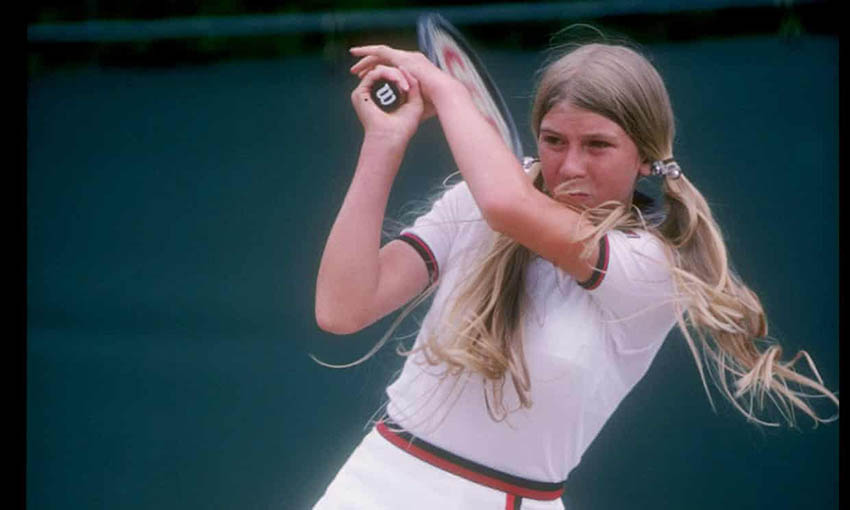Alysa Liu's Remarkable Rise: Is 13 Too Young to be An Elite Athlete?
The figure skater is barely into her teens and is already the US champion. But some believe the mental and physical strain of elite sport should wait
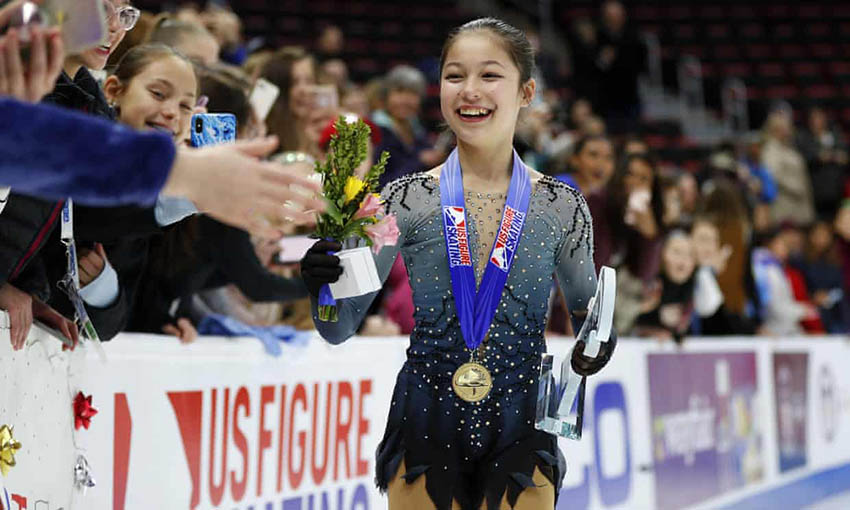
Alysa Liu greets fans while wearing her gold medal after winning the women’s title at the US figure skating championships. Photo Credit : Paul Sancya | AP
Alysa Liu covered her face and cried as the results were announced at the US ladies figure skating championship in Detroit, Michigan, last month. Her coach, Laura Lipetsky who has worked with her since she was five, hugged her.
Liu had just won the national title at the age of 13, making her the youngest athlete to have done so, and with two triple axles no less. The weeks since have been a media frenzy. She appeared on the Tonight Show with Jimmy Fallon, and profiles on her meteoric rise have been published across the world. But for all the attention Liu has received, she won’t be able to compete in Worlds. She’s too young. A 1997 International Skating Union rule requires athletes to be at least 15 by 1 July preceding the season to participate in senior-level international events.
That poses a question: is 13 too young to devote one’s life to sports? How young is too young to be a full-time athlete?
Liu’s childhood has been anything but ordinary. She usually trains four to five hours a day at the Oakland Ice Center under Lipetsky, who says in an email she spends so much time with Liu on a daily basis that “I feel like I am a mother to her.”
At the age of 10, Liu enrolled in California Connections Academy, an online program used by other elite skaters, to allow her the flexibility to travel for competition. Liu completes her homework between practices at her father’s nearby office. She eats dinner in the car on the way home and goes to bed around 8.30pm. Despite the rigorous schedule, her father, Arthur Liu told the San Francisco Chronicle, “She has lots of friends, has sleepovers. I’m trying to provide her with a normal life.” Lipetsky says that despite Liu’s age, she does not coach her any differently. “I want all my students to be able to be the best they can at any level they are in.”
There are countless cautionary tales about young phenoms burning out, leaving their sport or at least taking a break seemingly before their time was up. Jennifer Capriati. Björn Borg. Sonny Pike. Todd Marinovich. Pike, who was touted by some as the next Diego Maradona, described how the pressure affected him. “At 17 my head was finished. I was suicidal,” he told the Guardian in 2016.
The cautionary tales exist for good reason. Kids have different needs. Parents can be controlling, channeling their ambition through their children. Coaches can abuse their power. The pressure can be overwhelming for someone so young. But for every cautionary tale, there are prodigies who have had long careers: the Williams sisters, Magic Johnson, LeBron James. Unfortunately, there is no formula that can determine whether a young athlete with the necessary talent is ready to play a professional sport or not. “I don’t think there is a certain age,” says John Stevenson, a registered psychologist and mental performance consultant. “It really comes down to the individual.”
There are, however, some factors that can predict success or failure.
Andrea Jaeger, who reached the US Open semi-final at the age of 15, recalls waking up at 5am to run in Chicago winters. “It’d be 10F (-12C), and I’d be excited to do it because I loved training,” she says.
That kind of love of the sport makes it less likely a young athlete will face burnout. “That intrinsic drive is really difficult to quantify. If that’s coming from them, and not from the parent, that’s probably healthier,” Dr Charles Popkin, a pediatric orthopedic surgeon at Columbia University Medical Center, says.
Fostering that intrinsic drive means a hands-off approach. Stevenson jokes with parents that they should only do three things for their kids: drive them, care for them, and pay for them. “You’re not their coach,” he says. And for parents who are coaches, he tells them it’s sometimes their job to let go: “the information [may be] on point, but they don’t want to listen to mom and dad.” Jaeger, for her part, decided to keep her father as her coach, but acknowledges it was tough. “He was actually a phenomenal coach,” she said. “But the whole fact was I lost him as a father. So it wasn’t like you get both. I don’t think you can do both.”
Beyond parenting, avoiding burnout is about balance. While success depends on long hours training, it shouldn’t feel like a job. Dr Stephen Smith, who specializes in clinical sport psychology for adolescents, describes the difference between deliberate practice, where the focus is on drilling and improving skills, and deliberate play, “where kids get together, sometimes with an adult and sometimes not, and they just play.” While both are important to improving one’s skills, it’s important that the young athlete isn’t just practicing the sport; the enjoyment, after all, comes from playing it.
Jaeger only started playing tennis at the age of eight, but by 10 she was giving interviews, and by 14, she had turned pro. “I had People Magazine, Sports Illustrated, and Life Magazine at my junior high,” she says. Now 53, Jaeger recalls having fans recognize her with her signature long pigtails in airports in Japan. Jaeger rose to No2 in the world, her highest ranking as a professional tennis player, at the age of 16. She beat Billie Jean King, Martina Navratilova, and Chris Evert. “Personally, for me, I was fine being 14, being a professional tennis player. The environment wasn’t ready for me,” she says. “Professional women’s tennis wasn’t ready for a 14-year-old phenom. They just weren’t.”
Jaeger recalls going out on court at 1am to play a match and sharing locker rooms with grown women. She notes today’s organizing bodies are better, but she says there should be a safety system that includes background checks on adults who come in contact with young athletes. Jaeger points to the failure of USA Gymnastics to protect athletes from the sexual abuser Larry Nassar. “There’s no excuse for it,” she says. “Address the professionalism in the adults, and then maybe you’ll see these kids lasting longer.”
Jaeger, for her part, faced an organizing body that didn’t understand and actively tried to dissuade her from her other passion: charity. In between matches and practices, Jaeger would often go to the local hospital and bring toys for the kids. She never told anyone what she was doing in her spare time, but when a local newspaper wrote up as story about her talking about suicide prevention at a high school in White Plains, New York, the WTA gave her an ultimatum: tennis or charity. “You have to quit doing this. It’s not helping those kids. And it’s making us look bad,” Jaeger recalls being told. She was baffled.
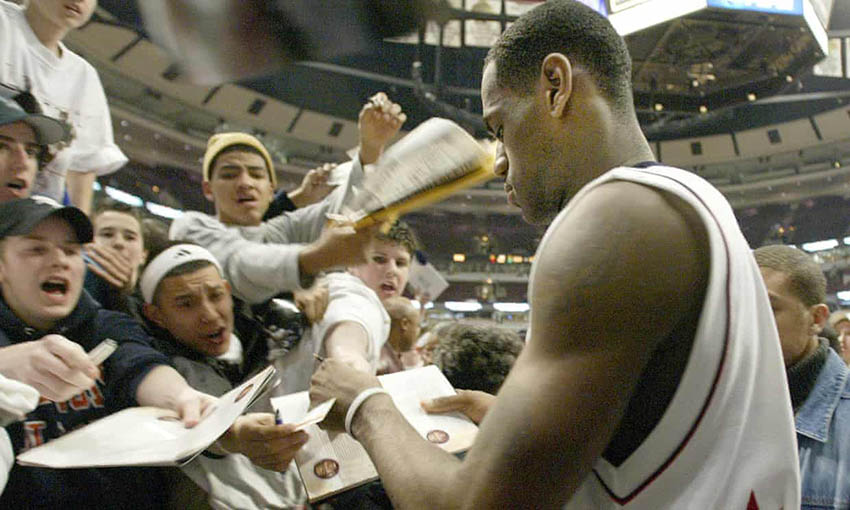 LeBron James was signing autographs while he was still at high school but has gone on to great success. Photo Credit : Ted S Warren | AP
LeBron James was signing autographs while he was still at high school but has gone on to great success. Photo Credit : Ted S Warren | APInjuries tend to plague young professional athletes. Part of this is the wear and tear that specialization in a sport, defined as competing for at least nine months of the year, requires. When there’s no off time, there’s less time for muscles to heal. (It’s no surprise then that Liu has had multiple hip surgeries.)
Popkin noticed a problem that came up time and again when treating young athletes’ injuries. After the injuries began to heal, some children would avoid their sport. “There was a psychological component to overcome as well. There were some similarities with PTSD,” Popkin says. Along with other surgeons and psychologists at Columbia University, he shared his findings in a paper this past summer. They found that young athletes who tear their ACL, have “emotional trauma, anxiety, symptoms of hyperarousal, avoidance of their activity.” The problem, Popkin says, is that for “a lot of kids, particularly if they specialize early, their identity is wrapped up in their sport.”
Smith has seen the same thing. “You have someone who has just done one sport, and they don’t think of themselves as good students, they don’t think of themselves as artists, they don’t think of themselves as anything but their sport, and then they blow out a knee or they have an ACL tear, or they’ve got one too many concussions, whatever it is, then what?”
For Jaeger, that point was put to her starkly after she blew out her shoulder in the first round of the 1984 French Open. After she defaulted the match, she says a reporter came up to her and told her: “You will never amount to anything ever again now that you can no longer play tennis. She now recalls: “People didn’t talk to me for years, years because I was no longer of value.”
But Jaeger had other plans. “My shoulder popped, and I was like ‘OK, God decided I go help kids full time.’” It took her a few more years to leave professional tennis, but when she did, used her winnings to begin The Little Star Foundation, a charity for children with cancer she still runs today.
Many people point to Jaeger as an example of a child prodigy who lost her childhood. Jaeger doesn’t see it that way. “I had a great childhood. I traveled my juniors. I went to Australia at age 10, South Africa at age 13.” Jaeger missed her prom, but “I just wasn’t that kid,” she says. “I chose to be on the circuit. I chose to turn pro. My parents did not make me do it.”
For now, Liu’s season is over. Her latest trip wasn’t for ice skating, but for fun. Along with her family, friends and Lipetsky’s family, she headed to Disneyland this past weekend. “That is our tradition we have after the season is over,” Lipetsky said.
When asked whether 13 is too young to compete as an elite athlete, Lipetsky says that everyone progresses at their own rate. “Age is just a number and she should not he criticized for her age … she has proved to everyone that she deserves to be a professional athlete.”
Jaeger agrees. “If they’re succeeding, how can you stop them?”
This article originally appeared on : The Guardian
-

Indigenous people march in Brazil to demand land demarcation
2024-04-24 -

Talks on global plastic treaty begin in Canada
2024-04-24 -
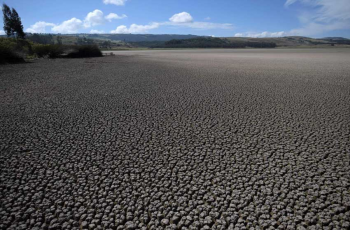
Colombian court recognizes environmental refugees
2024-04-24 -
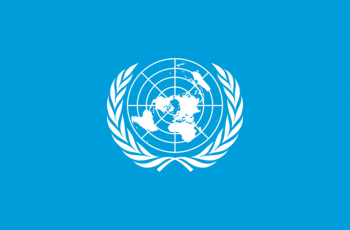
Asia hit hardest by climate and weather disasters last year, says UN
2024-04-23 -

Denmark launches its biggest offshore wind farm tender
2024-04-22 -

Nobel laureate urges Iranians to protest 'war against women'
2024-04-22 -

'Human-induced' climate change behind deadly Sahel heatwave: study
2024-04-21 -

Moldovan youth is more than ready to join the EU
2024-04-18 -
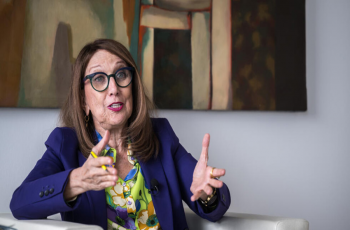
UN says solutions exist to rapidly ease debt burden of poor nations
2024-04-18 -
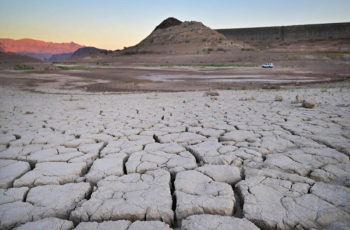
Climate impacts set to cut 2050 global GDP by nearly a fifth
2024-04-18

